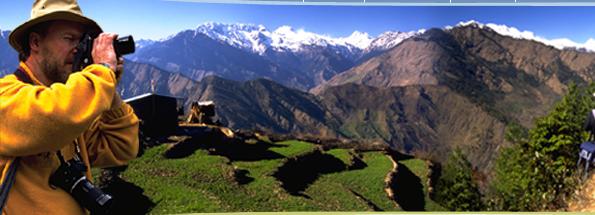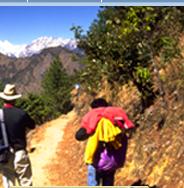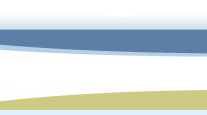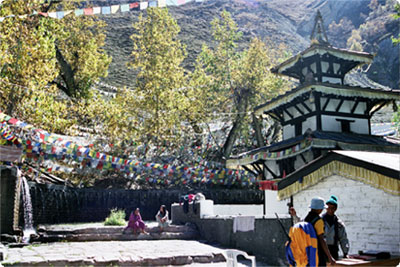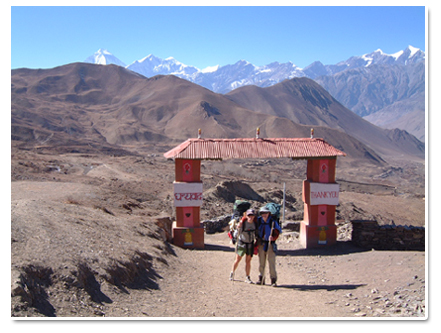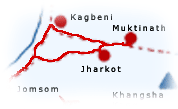|
Jomsom
is more correctly known as Dzongsam or New Fort. It
spreads over both the banks of the Kali Gandaki. The
towering peaks of Dhaulagiri and Nilgiri form an attractive
backdrop. Being the district headquarters, it is primarily
an administrative and commercial center with government
officials and merchants rubbing shoulders with the local
inhabitants of the region, known as the Thakalis. It
has a wireless station, a police station, a bank, a
hospital and a veterinary hospital. A company of the
Nepalese Army is stationed here. Nearby is an airfield,
from where flights operate regularly. However, due to
the strong winds that buffet the area in the afternoons,
the airfield is functional only in the forenoon.
The Thakalis living in
the Jomsom region and in the nearby villages of Marpha
and Tukuche have been known for their trading skills.
They occupy an important village on the traditional
trade route between the Gangetic plains of India and
Tibet.
|
Muktinath
Temple on Jomsom Muktinaht Trekking |
The views from
Jomsom are enchanting
as the Nilgiri and Dhaulagiri
ranges reflect the golden rays of the rising and setting
sun. The entire panorama is filled with a golden, glittering
light, which forms a dramatic contrast with the barren,
black and dry mountains of the surrounding Kali Gandaki
valley.
The views of the mountains
are spectacular, and the route actually crosses to the
other side of the main Himalayan range for some unusual
views of the northern flanks. The entire route remains
below 3000 metres, though the trek is still strenuous
enough to be stimulating (see the Route Profile for
the trek around Annapurna). This is a good trek if you
wish to avoid high altitudes.
Muktinath, situated at
a height of 3,660 m, is an important pilgrimage center
for both Hindus and Buddhists. The most prominent shrine
is a Vishnu temple where 108 spouts, fashioned in the
shape of cows' heads, pour forth water that is considered
to be holy. This water is channeled from a stream running
above the temple. The temple is built in Tibetan style
and contains huge brass idols of Vishnu, Shiva, Brahma,
and Kali. Nearby is another temple where water gushes
out of a rock and this water is considered even more
holy. There is also a Buddhist Gompa (monastery), and
a pagoda-type temple dedicated to Jwala Mayi (goddess
of fire). In this temple, shielded by curtains, are
the outlets for the natural gas that oozes from the
rock and feeds the temple flame.
There is also a spring
close by. These three elements together are considered
to be an auspicious convergence of earth, fire and water.
There are two temples
of note, a dilapidated temple with the idols of Lord
Shiva and his consort Parvati, and a Narsingh temple
where rituals are performed according to both Hindu
and Buddhist customs. Here the two religions coexist
together and in the two-story structure, the lower story
is the Gompa while the upper story is the temple.
Muktinath and its
high valley are located in the Mustang Bhote region.
The climate and landscape here are similar to those
of the Tibetan Plateau since it is situated in the rain
shadow of the Greater Himalayas. Flowing through the
region from north to south and forming deep gorges is
the Kali Gandaki river, which as its name implies (kali
= black) is a black river -- the black stones of the
riverbed and black soil contributing to the effect.
| Fact Box |
| Starting
from: |
Kathmandu |
| Ending
at: |
Pokhara |
| Grade: |
Moderate |
| Highest
access of the trek: |
3800m (Muktinath) |
| Culture
encounter |
Gurung, Magar, Thakali |
| Trekking
type |
Teahouse |
| Himalayan
sights: |
Dhaulagiri, Fishtail,
Annapurna range, Manaslu, Nilgiri |
| Most
Attraction of the trek: |
Close Mountain View,
Villages |
| Best Seasion: |
February, March, April, May,
October, November |
| Meal: |
breakfast, lunch, & Dinner) |
| Activities:
|
Trekking |
| Transportation:
|
Car / Van |
| Accommodation: |
Lodge |
| Minimum
Group Size: |
1 |
| Per
day Walking: |
5 to 7 hours |
| Itinerary type |
Fixed / Customized |
| Day
to Day Itinerary |
| Day
01 |
Arrive
in Kathmandu Airport & Transfer to Hotel
Welcome dinner in the evening. |
| Day
02 |
Full
day Sightseeing in Kathmandu Valley.
We will be visiting three of the famous heritage
sites in Kathmandu. You will visit first the Swayambunath
Stupa (Monkey Temple). It is said that
Swayambunath Stupa is more than 2,000 years old,
and it symbolizes knowledge. The painted eyes on
all four sides symbolize the all-seeing power of
Buddha. It is an important Buddhist place where
pilgrims from all over the world come.
It
is a 30 minutes drive to Boudhanath
Stupa, another important Buddhist pilgrims
site. This ancient Stupa is considered one of the
biggest in the World. Every morning and evening,
many Buddhist devotees come here to pray and circumambulate
enabling the visitors to observe local religious
practices.
One
of the holiest hindu shrines in the world,
The fabulous pagoda houses the linga of
Lord Shiva and people bathe in the Bagmati River
with a faith of cleansing themselves spiritually.
Many Sadhus or Hindu Ascetics live here. During
religious festivals, Hindus come to make offerings,
and it is sometimes very crowded.
Bhaktapur
Durbar Square: This former royal palace
complex offers the elegant 15th century Palace of
55 win-dows, artistic courtyards, the Golden gat.
Patan
Durbar Square : Durbar Square an enchanting
melage of palace buildings, courtyards and pagoda
temples, is the center of Patan's religious and
social life. |
| Day
03 |
Kathmandu
- Pokhara by Toursit Bus
A beautiful town set on the banks of the Phewa Lake.
It is smaller and much less hectic than Kathmandu
and is the perfect starting point for our trek.
Your first day in Pokhara can be spent just relaxing
or you may enjoy a visit to the Tibetan Refugee
Camp and Devi Falls. The remainder of the time is
yours to enjoy either doing last minute shopping
for the trek or packing your kitty bag for the following
day's departure O/N Hotel B&B |
| Day
04 |
Pokhara
- Jomsom - Kagbeni
Fly to Jomsom & sightseeing around Jomsom. The
Kaligandaki valley here is called the Thakkhola,
after the native Thakalis, who are distantly related
to the Tibetans. The day we walk to Kagbeni, the
checkpoint of entry to Upper Mustang. The altitudes
of this trek vary between about 915m at Pokhara
to approx.3880m at Muktinath; going up and down
will test the best pair of knees. The secret is,
take it SLOWLY! |
| Day
05 |
Kagbeni
- Muktinath
We ascend steeply to a 3880m, at Muktinath. This
is one of the most important pilgrimage sights for
Hindus. Holy water flows from the 108 carved spouts
surrounding the Vishnu temple in a grove of poplars.
Muktinath is also home to many ethnic Tibetans and
holy Buddhists, who come here for the temple in
which fire miraculously burns in a stream of water
inside a small but very holy temple. |
| Day
06 |
Muktinath
- Jomsom
Descend gradually through fields and poplar groves,
then into the Kali Gandaki river valley. Follow
the valley southwards to Jomsom. The Kali Gandaki
valley here is called the Thak Khola, from the ethnic
group the Thakalis, the main inhabitants of this
area. |
| Day
07 |
Jomsom
-Kalopani
Descend to Marpha, a lovely village of whitewashed
houses and fertile fields. Continue down the Kali
Gandaki reaching the old Thakali trading center
of Tukuche. As the trail continues, the Himalayan
rain shadow end and open spaces make way for coniferous
forest and Kalopani (2560m.) From here there are
spectacular 360-degree views of Dhaulagiri and the
Annapurna high above. |
| Day
08 |
Kalopani
- Tatopani
A beautiful walk, with another transition into sub-tropical
vegetation and the return of water buffalo, banyan
trees and poinsettias. The trail follows the river
through a narrow gorge, and descends to cross a
bridge near a spectacular waterfall, before winding
through the valley to Tatopani. The hot water springs
that give the village its name provide the perfect
opportunity for a good 'scrub. |
| Day
09 |
Tatopani
- Ghorepani
Steadily climbing all day, we eventually leave behind
the terraced fields and walk through thick rhododendron
forest to the village of Ghorepani. We camp at the
pass for the best views of the sunset over the spectacular,
snow-capped Dhaulagiri and the Annapurna Range. |
| Day
10 |
Ghorepani
– Tadapani
Early morning, you will visit the famous Poon Hill
where you will hopefully be blessed with a fantastic
sunrise and 360 deg view of all the Annapurna Range
including Annapurna South (7272m) Annapurna I (8091m)
with imposing views of the Mt. Dhaulagiri (8157m)
and the Dhaulagiri Range to the West. The views
here are breath taking as you sit and sip on a hot
chocolate before heading down the main trail to
Pokhara. Here you will be able to see how things
have changed over the years since western man started
visiting the Himalayas. One of the added advantages
of lodge trekking is being able to sit and chat
to the Sougi (Inn Keeper), whilst he spins you yarns
about life in Nepal. A short early-morning climb
to the Deurali pass for a spectacular panorama over
Dhaulagiri and the Annapurna, and all the way south
to the plains of India. Trail descends steeply through
dense moss-covered forest rich with bird life to
Tadapani (2540m) for beautiful sunset views of Annapurna
South and Machhapuchhre. |
| Day
11 |
Tadapani
- Ghandruk
Trail descends steeply through dense damp forest,
where you may see monkeys, and continues down over
a series of rock-cut steps that follow a leaping
stream. Arrive in Ghandruk (1940m) and explore the
maze-like streets of this thriving Gurung settlement. |
| Day
12 |
Ghandruk
- Birethanti - Pokhara
A steady climb down past startlingly green cultivated
terraces and picturesque, beautifully-preserved
farms to the scurrying Modi River, which the trail
follows back to Birethanti. Drive to Pokhara. O/N
at Hotel. |
| Day
13 |
Drive
Back to Kathmandu |
| Day
14 |
Free day in Kathmandunu |
| Day
15 |
Tour ends |
Trek Price as per above
program
Group Size |
01 |
2 - 3 |
4 - 5 |
6 - 7 |
8 - 9 |
10 - 11 |
12 + Above |
Price in US$ |
670.00 |
640.00 |
620.00 |
600.00 |
580.00 |
560.00 |
530.00 |
Package Price Includes
-
Airport / Hotel
/ Airport pick up & drop off by car
-
All the ground
Transportation by bus
- 4 nights accommodation with
breakfast at deluxe hotel in Kathmandu.
-
All the meal
during the trek (Breakfast, Lunch, Dinner)
-
Trek Permit
& National Park Fee
- Annapurna conservation permit,
and all necessary permits.
-
An experience
guide (trained by Ministry of tourism), necessary
Trekking staff and their meal/accommodation/transportation/salary/insurance/equipments.
- Domestic Air fare US$
67 per person Jomsom to Pokhara
Package Price Excludes
- Personal bar bill, travel
insurance/International airfare/Domestic airfare.
- Items of personal expenses
such as alcoholic drinks, cold drinks, laundry,
tips etc.
- Nepal entry visa fee US$
30 (duration 60 days from date of issue)- Available
at Royal Nepalese Embassies and Royal Nepalese Consulates
abroad or on arrival at Tribhuvan International
Airport in Kathmandu.
- All the entrance fee of temple
in Kathmandu and Pokhara
- All the meal while
you are in Kathmandu

|


